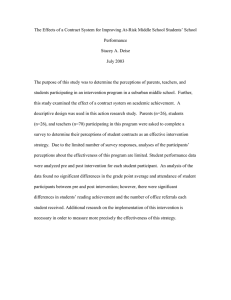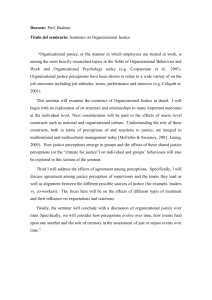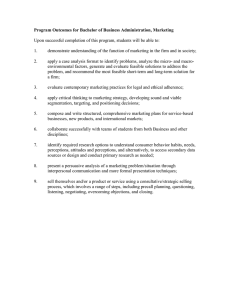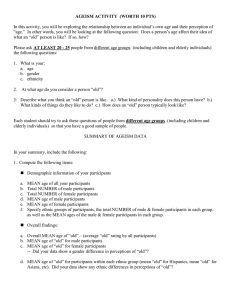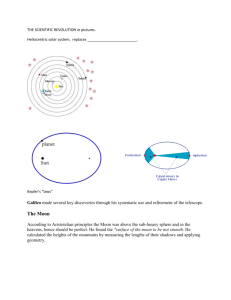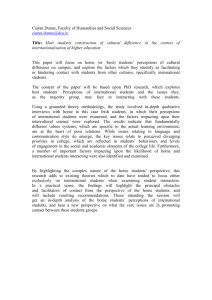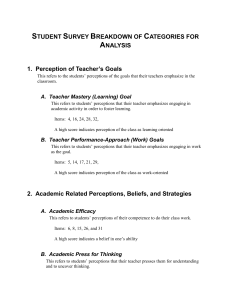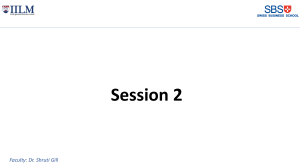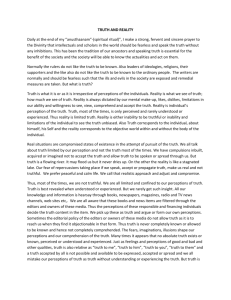Scientific Observation: Objectivity & Fallibility
advertisement
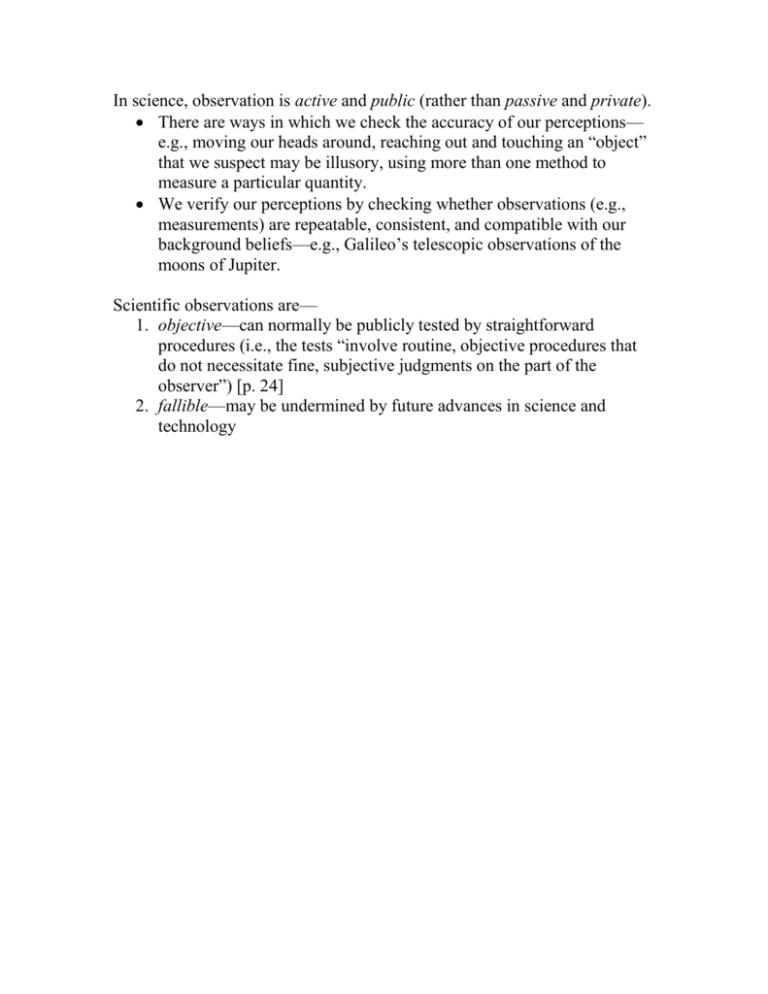
In science, observation is active and public (rather than passive and private). There are ways in which we check the accuracy of our perceptions— e.g., moving our heads around, reaching out and touching an “object” that we suspect may be illusory, using more than one method to measure a particular quantity. We verify our perceptions by checking whether observations (e.g., measurements) are repeatable, consistent, and compatible with our background beliefs—e.g., Galileo’s telescopic observations of the moons of Jupiter. Scientific observations are— 1. objective—can normally be publicly tested by straightforward procedures (i.e., the tests “involve routine, objective procedures that do not necessitate fine, subjective judgments on the part of the observer”) [p. 24] 2. fallible—may be undermined by future advances in science and technology
